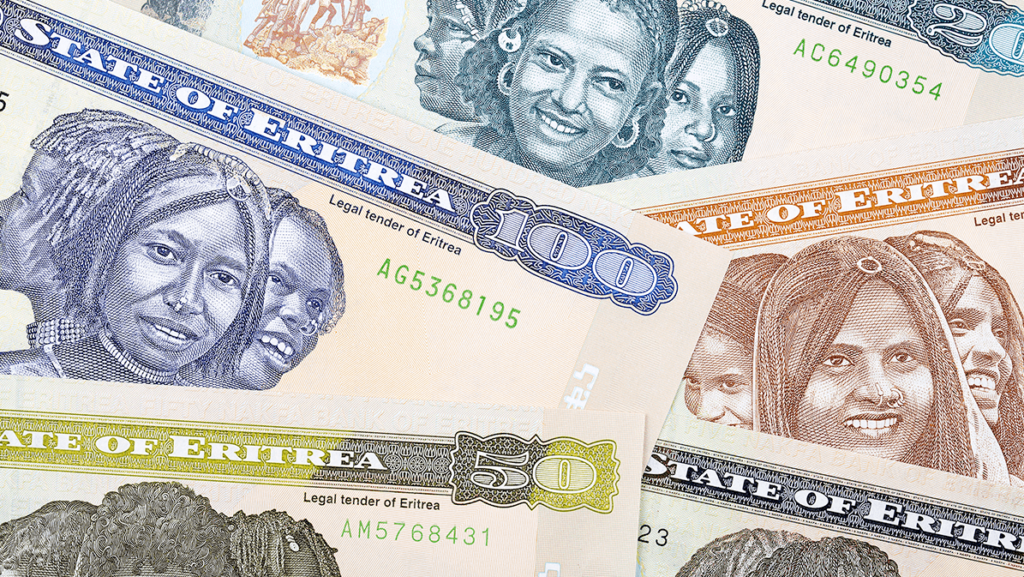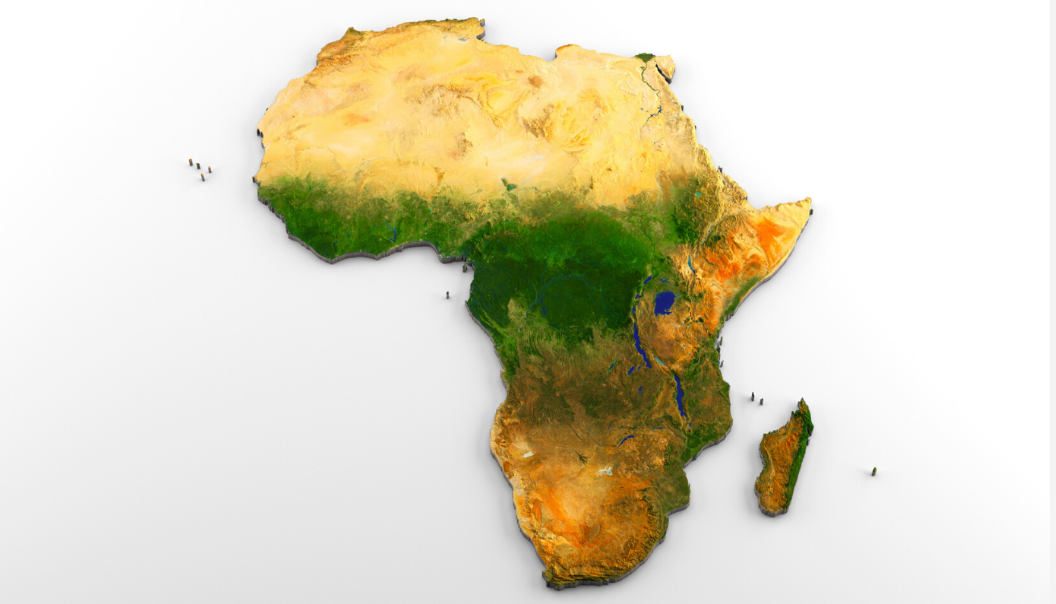Africa is a land full of opportunities. Africa has 54 countries that are uniquely unique in their way of doing things from East Africa to West Africa, North to South Africa, Africa is blessed with a lot of natural resources such as gold, bauxite, diamonds, and others.
There are so many currencies in Africa. Whiles some are performing well against the United States dollar on the international market, the majority of the African countries’ currency is performing very poorly.
The United States dollar (USD) remains the global benchmark when ranking currencies.
Highest Currency In Africa
Below is the list of the highest currency in Africa. The arrangement is done from the lowest (weakest) to the highest (strongest).
10. Egyptian Pound

Code: EGP Symbol = E£ 1 USD = 31.08 EGP
The Egyptian pound is denoted by the sign E£, it is the 10th highest currency in Africa and the official currency of the Arab Republic of Egypt. At first, it was backed by precious metals, the Central Bank of Egypt started a managed float in 2001 before switching to a float in 2016. Before the float, one dollar was equivalent to 8.8 Egyptian pounds but rose to about 15 Egyptian pounds per dollar after undocking.
The EGP’s use as an unofficial currency in Sudan and the Gaza Strip solidifies its status as one of Africa’s strongest currencies. The Egyptian pound is also one of the most valuable currencies in Africa because Egypt has the second-highest nominal gross domestic product on the continent, behind only Nigeria.
9. Zambian Kwacha

Code = ZMW Symbol = ZK 1 USD = 19.82 ZMW
The Zambian Kwacha (ZMW), issued by the Bank of Zambia as the country’s official legal tender, is the 9th highest currency in Africa. Despite being one of the strongest currencies in Africa, the Zambian Kwacha is not often traded by currency speculators due to its susceptibility to inflation and instability over time.
The Kwacha replaced the pound in 1968, after Zambia’s independence from the United Kingdom. Zambia is the biggest copper producer in Africa, hence, its currency is prone to instability on the world market based on the fluctuation of commodity prices in the global copper market
8. South African Rand

Code = ZAR Symbol = R 1 USD = 18.51
The South African Rand was launched in February 1961, the South African Rand is the 8th highest currency in Africa. Before the end of apartheid, It had a relatively steady exchange rate with the United States dollar which remains the global benchmark when ranking currencies, but since then the value of the South African Rand has depreciated because the South African economy has grown more integrated with the global economy. A lot of nations in the region such as Lesotho, Namibia, and Swaziland, have attached their currencies to the South African Rand, just to strengthen their position as one of the strongest currencies in Africa.
The South African Rand stands as the most traded legal tender in Africa and one of the top 20 globally, the South African Rand is arguably Africa’s best currency. South Africa’s primary export in its early years. The South African rand, still, remains at the mercy of global uncertainty owing to South Africa’s frail economy and unstable political scene.
7. Eritrean Nakfa

Code = ERN Symbol = NFK 1USD = 15 NFK
The Eritrean Nakfa (NFK) ranks 7th amongst the highest currencies in Africa and is Eritrea’s official legal tender. The Nakfa has experienced stability throughout the years as a result of the Eritrean government’s preference for a fixed exchange rate versus a floating currency. Indeed this currency has the potential of growing even bigger in the African and International market.
6. Seychellois Rupee

Code = SCR Symbol = SR 1 USD = 13.98 SCR
The Seychellois Rupee ranks 6th on our list of highest currencies in Africa. The Seychellois rupee is also the strongest currency in East Africa as a result of Seychelles’ market economy. Foreign investment as well as the bloom of agriculture, fisheries, and small-scale industrial industries have led to the growth of the country’s economy. This has contributed to the diversification of Seychelles’ gross domestic product.
The fact that Seychelles has the largest GDP per capita in Africa has also contributed to the Seychellois Rupee ranking as one of the strongest currencies in Africa. Another factor behind the high value of the Seychellois rupee is that Seychelles is the smallest nation with an independent monetary policy.
5. Botswana Pula

Code = BWP Symbol = P 1USD = 13.17 BWP
The Botswana Pula was inaugurated in the year 1976, eleven years after Botswana’s independence from the British. In recent years we have seen some improvement with the Pula. The Botswana pula (BWP) is the 5th highest currency in Africa and the strongest currency in Southern Africa. Despite the 2005 depreciation of the legal tender, the Botswana Pula remains one of the strongest currencies in Africa, with a Pula equaling 0.08 dollars.
Because of Botswana’s robust and stiff economy and generally stable democracy, the Botswana Pula has continued to remain one of the most valuable currencies in Africa. It is also an appealing currency since it is traded on Africa’s biggest stock exchange, the Johannesburg Stock Exchange. There is hope and a future in Botswana and Africa in general.
4. Ghanaian Cedi

Code = GHS Symbol = GH₵ 1 USD = 10.8 GHS
The new Ghanaian Cedi was introduced in the year 2007, under the presidency of His Excellency the former president of Ghana John Agyekum Kuffour to commemorate the fiftieth anniversary of Ghana. The Ghana Cedi (GHS), the fourth historical legal currency of the Republic of Ghana, is the most valuable currency in West Africa and sub-Saharan Africa. Also the 4th highest currency in Africa, the GHS replaced the GHC in 2007 following years of inflation-induced depreciation.
According to Bloomberg research, the GHS was the best-performing currency in the world versus the dollar in 2020. The US agency reported that the Ghanaian Cedi increased by 3.9%, the greatest rise among the more than 140 legal tenders monitored, making it one of the strongest currencies in Africa. The Ghanaian currency dropped by 54.2% against the United States dollar during the first eleven months of 2022, according to economic and financial statistics released by the Central Bank (Bank of Ghana, BOG) in November. This made the Cedi the worst-performing currency in the world. During the period under consideration, the Ghanaian currency again lost 48.9% and 50% of its value between the pound sterling and the euro. As a consequence, the Ghanaian Cedi dropped a spot on this ranking of Africa’s most valuable currencies.
This predicament is mostly blamed on the result of the Russia-Ukraine conflict which has caused an increase in import costs and, therefore, a larger outflow of foreign currency. Government expenditure initiatives and employment development have helped maintain the currency’s strength, and the GHS is more valuable due to Ghana having the highest GDP per capita in West Africa. We can only hope for the best in the coming years for Mother Ghana.
3. Moroccan Dirham

Code = MAD Symbol = DH 1 USD = 10.21 MAD
The Moroccan dirham is the primary unit of legal tender in Morocco and is the 3rd highest currency in Africa. The Moroccan dirham cannot be traded outside the nation and is virtually immune to bank-influenced price swings. The dirham was established on October 17, 1959, under the administration of Abdallah Ibrahim, after the founding of Bank Al-Maghrib and the elimination of the Moroccan franc, which had been in use since 1921.
Since its inception, the MAD has been one of the strongest currencies in Africa. the Moroccan dirham is the de facto medium of exchange, In the Western Sahara area, and although it remains unregulated, its export is prohibited by law.
2. Libyan Dinar

Code = LYD 1 USD = 4.77 LYD
At 4.77 LYD to the dollar, the Libyan dinar is the 2nd highest currency in Africa. The Libyan Dinar was established to replace the then-Libyan Pound in 1971, some fifty-two years ago, when Muammar Gaddafi took over from King Idris in a coup, and was maintained at the same value as the Libyan pound. Manufacturing, issuing, and controlling the currency, which consists of 1,000 dirhams per dinar is the sole responsibility of The Central Bank of Libya.
The Libyan Dinar has progressively depreciated against major currencies like the U.S. dollar, the British pound, and the euro over the years, even though it remains one of the strongest currencies in Africa. This is due to various factors such as the decline in oil prices on international markets which is their most significant international resource of trade. Since oil sales are Libya’s primary source of income, the waning global dependency on oil has had a detrimental effect on the dinar.
1. Tunisian Dinar

Code = TND Symbol = DT 1 USD = 3.07 TND
The Tunisian Dinar is the strongest currency in Africa, With a dollar conversion rate of 3.07 Dinars, the Tunisian Dinar is, in 2023, the highest currency in Africa. The Tunisian Dinar was launched in 1958, two years after Tunisia’s independence from France, while the Tunisian franc was in force. After the franc’s depreciation, the TND was fixed to the USD at a rate of 0.42 dinars to 1 dollar, which remained in place until 1971.
Tunisia’s historically low inflation rate has contributed to the rise of the TND over the years to the top of the African currency rankings. From 2000 to 2010, it saw less volatility than Egypt and Morocco, two neighboring oil-based economies. To enhance its status as the most valuable currency in Africa, the Tunisian government declared it illegal to import, export, or convert dinars into another currency.
Conclusion
The performance of these African currencies depends on a lot of factors as listed in the write-up above. There is still hope that some of these currencies will perform better in the future.
Thanks for reading our article. Please share with friends and if you have any issues with our article or have a tip or recommendations for us, kindly visit our contact us page and write to us.








